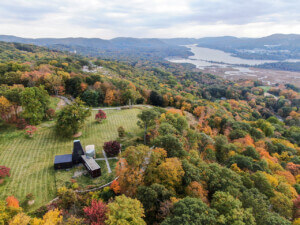The 35th annual conference of the Association for Computer-Aided Design in Architecture (ACADIA) took place in Cincinnati (at Peter Eisenman’s infamous DAAP Building) in late October. The international conference is a three-day long academic event presenting peer-reviewed research and experimental work of 50 computational designers, students, and architects. Topics range from material science, biomimesis, geomimesis, robotics, environmental parametrics, and ecological urbanism.
The conference was bookended by a series of three-day workshops at the beginning of the week, and a one-day post-conference hackathon, organized by Site Coordinator Brian Ringley (Woods Bagot/Pratt Institute).
The workshops provided a range of projects catering to both students, industry leaders, and design professionals. Topics covered ranged from CNC machining to Interaction Design (IxD) to BIM analysis and optimization. Tools featured in the workshops included Processing (Java), Dynamo (Autodesk), and Rhino/Grasshopper.
The conference presentations and discussions were distributed between downtown Cincinnati (Deborah Berke’s 21c Museum and Zaha Hadid’s Contemporary Arts Center) and the University of Cincinnati two miles north of downtown, where a large portfolio of signature contemporary architecture has been built largely within the past decade.
Keynote lectures by Stefan Behnisch, amid.cero9, Francois Roche, and Nader Tehrani were spread throughout the daily sessions. A curated exhibition of installations debuted during the conference, expanding on the ‘computational ecologies’ theme. The exhibition, titled ECO-DIVERSITY: Computation and Identity, will be open to the public through December 6, 2015.
“This year’s event was smaller than last year’s Los Angeles-based conference, however the quality of papers and discussions remains at a high level,” according to ACADIA President Jason Kelly Johnson.
Ringley saw the conference as a “unique way to showcase innovation embedded within the historical richness of a post-industrial Midwestern context.” Local flavor from this year’s conference included an evening coordinated by Matt Anthony’s Cincinnati Made initiative at a 25,000-square-foot renovated 1850s brewery in the heart of Over-the-Rhine’s brewery district—a neighborhood which contains the country’s largest historic district. Outside the brewery, Giacomo Ciminello showcased his People’s Liberty–funded “Spaced Invaders” projection-mapped video game, an ongoing art project calling attention to underutilized urban spaces in the city.
A full list of organizers, sponsors, and participants can be found on the conference website. Papers will soon be added to an open access platform CUMINCAD, a digital library of 8,300 PDF full papers. Next year’s conference will remain in the Midwest: It is coming to Ann Arbor’s Taubman College at the University of Michigan. The theme will be Posthuman Frontiers: Data, Designers and Cognitive Machines.
—
Organizers for “ACADIA 2015 COMPUTATIONAL ECOLOGIES: Design in the Anthropocene” include:
- Lonn Combs, Technical Chair
- Chris Perry, Technical Chair
- William Williams, Site Chair
- Mara Marcu, Exhibitions, Website, Social Media
- Brian Ringley, Workshops and Social Media
- Stephen Slaughter, Site Related Events and Publications
- Ming Tang, Website, Site Related Events and Publications










